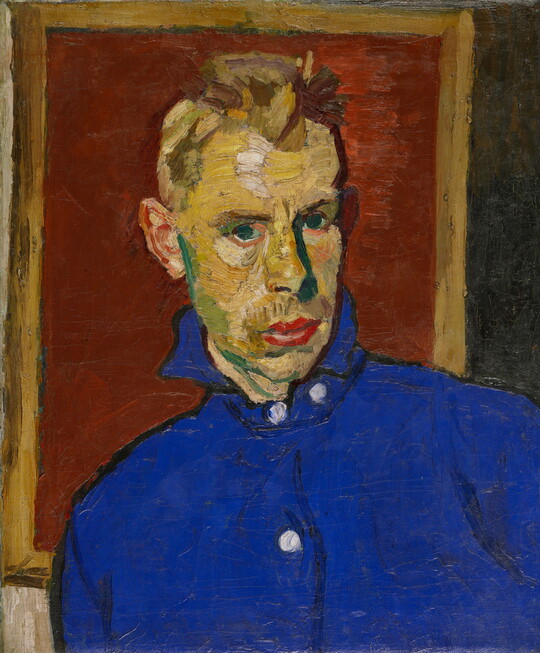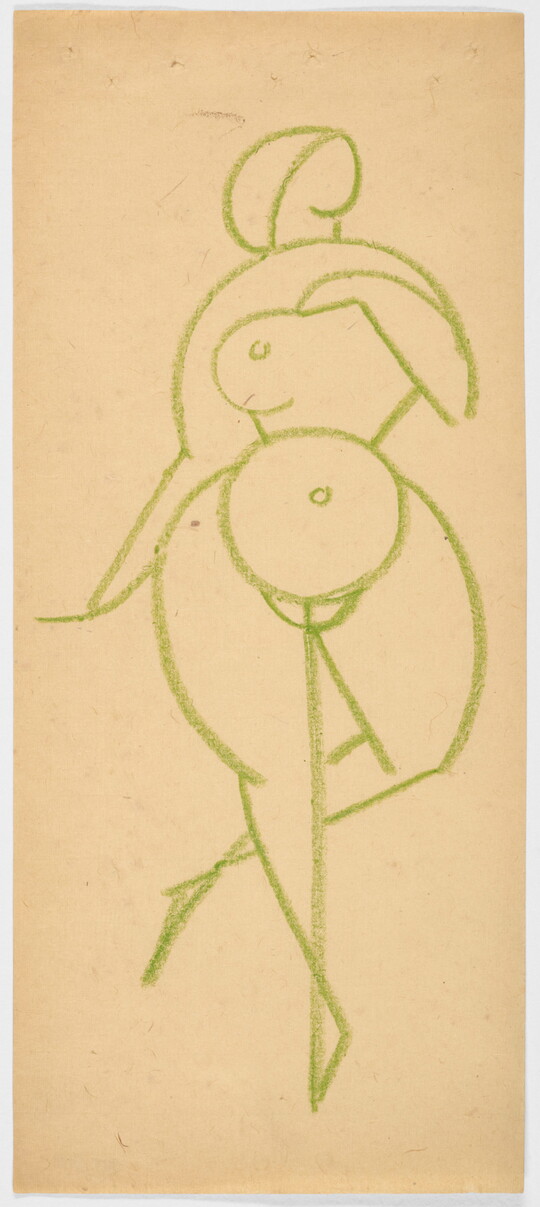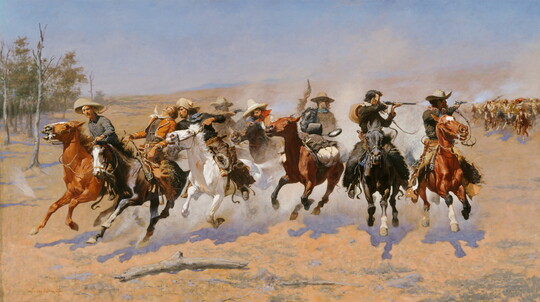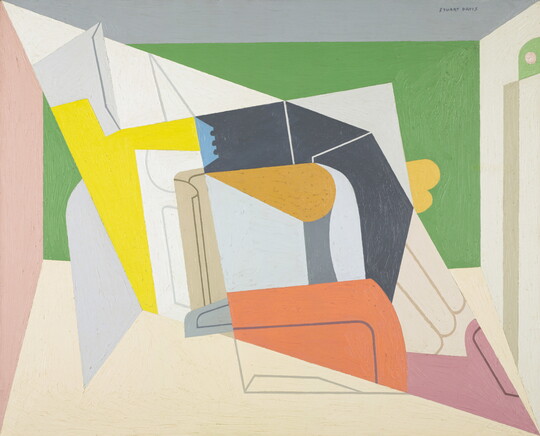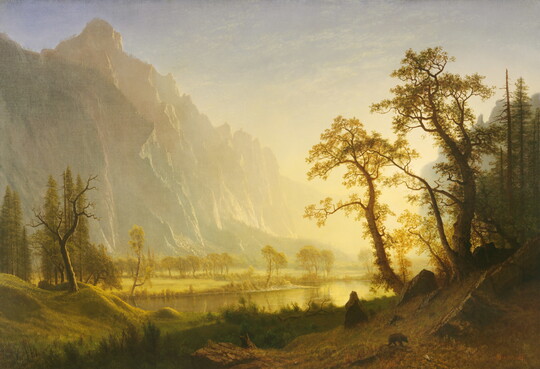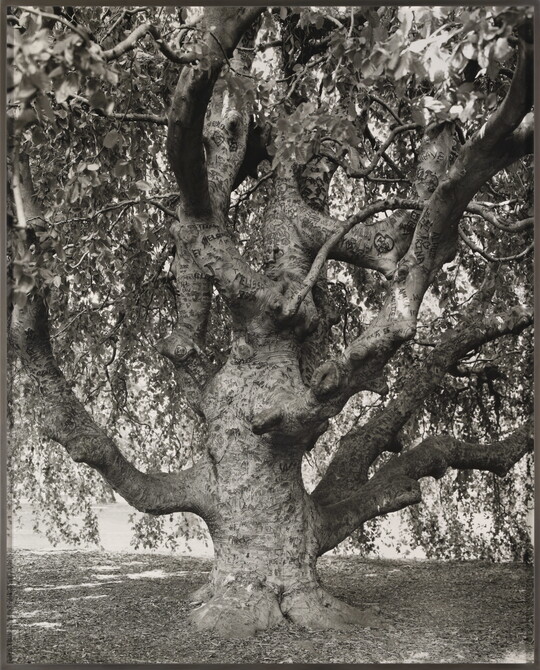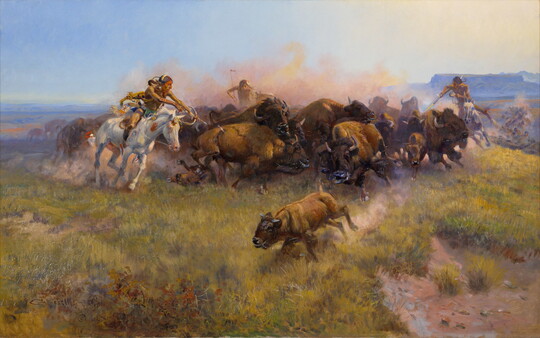


Artwork Images
Photo:
Controls
Thunder Shower
Object Details
-
Date
1940
-
Object Type
Paintings
-
Medium
Oil and wax emulsion on canvas
-
Dimensions
20 1/4 x 32 in.
-
Inscriptions
Recto:
signed, l.c.: DOVE.
-
Credit Line
Amon Carter Museum of American Art, Fort Worth, Texas
-
Accession Number
1967.190
-
Copyright
Public domain
Object Description
Dove was fascinated by meteorology, and he kept detailed records of his weather observations in his journal. Completed in 1940, Thunder Shower may have been inspired by a storm that he drove through on Long Island in September of 1939 while traveling with his wife, the artist Helen Torr.
The picture shows a lightning bolt cutting through the sky, illuminating the surrounding clouds in a burst of yellow light. In painting the weather, Dove sought to convey more than just visible sensations. The layered sawtooth shapes of orange, blue, and red mimic the uneven illumination of an unsettled sky, but they also suggest the radiating soundwaves of a thunderclap. Meanwhile, to the left of the lightning bolt flecks of black paint suggest the process of moisture condensing into raindrops, an idiosyncratic reference to the unseen processes that shape the natural world.
—Text taken from the Carter Handbook (2023)
Additional details
Location: On view
See more by Arthur Dove
Tags
Video:
Video:
-
How and why might an artist’s style change over time?
How does an artist use the ideas and techniques of other artists in their own work?
How might a work of art reflect an artist’s or a community’s lived experiences?
Why might an artist choose to abstract a scene rather than to create a more representational, or realistic, depiction?
What elements does an artist working in abstraction use to communicate a message or tell a story?
-
What do you see? Is the artist painting something from the real world? What do you think it might be?
Show the name of the painting and ask students if they see anything that reminds them of a thundershower. What do you see and where is it in the painting?
Describe the lightning and draw its squiggly line with a finger in the air. Notice how the light cloud in the center suggests the flash of a lightning bolt, while the blue-and-black edges suggest the shadows cast by the flash.
What other ways has Dove captured the shifts in weather? Look at the flecks around the lightning; what might they represent? Do they remind you of raindrops?
Look at the cloud formations in the sky. How would you describe them? Do they remind you of anything?
What is the mood of this painting? How does it make you feel? How does Dove capture that mood?
Arthur Dove and his wife were caught in a thunderstorm one evening while driving home, which gave Dove the idea to paint this work. Imagine you are in the back seat of their car. What has he chosen to leave out? What things about the storm did he consider most important? Describe with your five senses what it would be like driving with them.
-
Grades 4–8
Students will write an expository paragraph about a weather event in which they were involved. They should use their senses in their descriptions and be sure to tell how the story ends. Finally, students will draw the weather event and reflect on what they chose to include or exclude from their work of art.
Share Educator Resources
Amon Carter Disclaimer
This information is published from the Carter's collection database. Updates and additions based on research and imaging activities are ongoing. The images, titles, and inscriptions are products of their time and are presented here as documentation, not as a reflection of the Carter’s values. If you have corrections or additional information about this object please email us to help us improve our records.
Every effort has been made to accurately determine the rights status of works and their images. Please email us if you have further information on the rights status of a work contrary or in addition to the information in our records.
Related Works
-
Self-Portrait, 1919
Stuart Davis
Oil on canvas
1975.29
-
Green Nude, ca. 1920
Gaston Lachaise
Crayon on paper
2018.4
-
A Dash for the Timber, 1889
Frederic Remington
Oil on canvas
1961.381
-
Egg Beater No. 2, 1928
Stuart Davis
Oil on canvas
1996.9
-
Zerogram, 2017
Ellen Carey
Dye coupler print
P2018.40
-
Parson Weems' Fable, 1939
Grant Wood
Oil on canvas
1970.43
-
Sunrise, Yosemite Valley, ca. 1870
Albert Bierstadt
Oil on canvas
1966.1
-
Weeping Beech, Brooklyn Botanic Garden, Brooklyn, 2011
Mitch Epstein
Gelatin silver print
P2012.13
-
The Buffalo Hunt [No. 39], 1919
Charles M. Russell
Oil on canvas
1961.146



